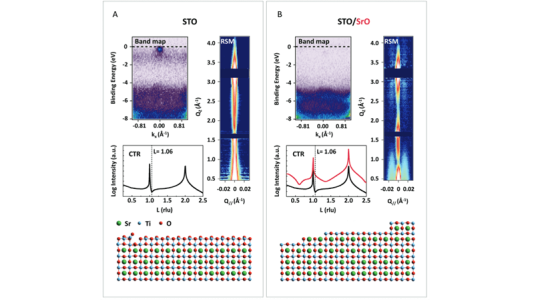
Scientific Achievement
Using an array of in situ X-ray techniques at Advanced Photon Source, we discovered that the surface of SrTiO3, the most common material used in the field of oxide electronics, exhibits a 2D electron gas (2DEG) due to the presence of a defect known as the TiO2 double layer.
Significance and Impact
A wide array of theories have been proposed for the unexpected appearance of conductivity at the surfaces / interfaces of well-known insulators. Our results show that defects present at interfaces of even the most carefully prepared samples can lead to a 2DEG. This work was selected for Advanced Photon Source Highlight.
Research Details
- In situ synchrotron X-ray studies during growth by oxide molecular beam epitaxy (APS, Sector 33)
- After growth of each monolayer, in-vacuum transfer to a neighbor beamline (APS, Sector 29) for angle-resolved photoemission spectroscopy
Argonne National Laboratory seeks solutions to pressing national problems in science and technology by conducting leading-edge basic and applied research in virtually every scientific discipline. Argonne is managed by UChicago Argonne, LLC for the U.S. Department of Energy’s Office of Science.
The U.S. Department of Energy’s Office of Science is the single largest supporter of basic research in the physical sciences in the United States and is working to address some of the most pressing challenges of our time. For more information, visit https://energy.gov/science.